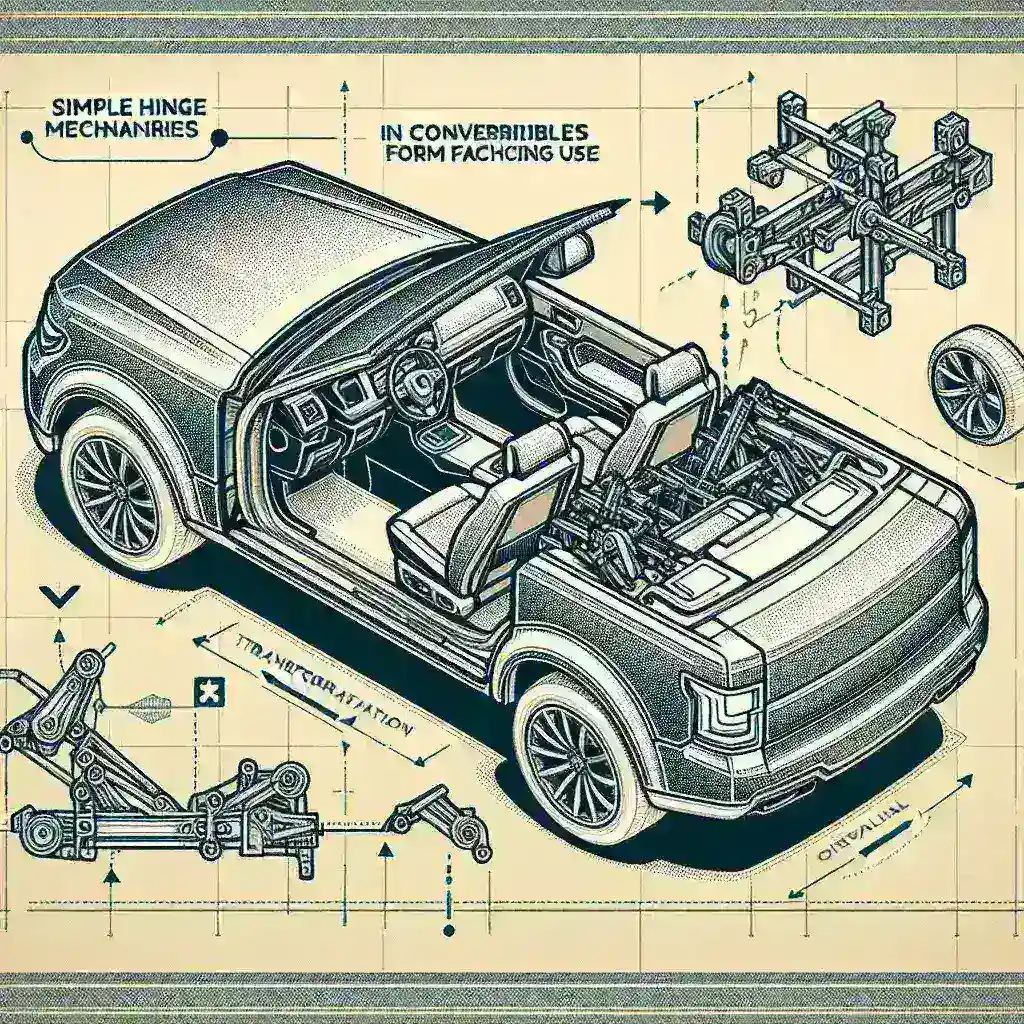Introduction
The automotive industry has undergone significant transformations since its inception, with design innovations playing a crucial role in shaping vehicles. Among these innovations, simple hinge mechanisms used in convertibles have revolutionized the form factor of automobiles, allowing for flexible designs that enhance both aesthetics and functionality. This article delves into how these mechanisms work, their historical context, and their impact on the future of vehicle design.
Understanding Hinge Mechanisms
Hinge mechanisms are pivotal in enabling movement and flexibility in various applications, particularly in convertibles. At their core, hinges allow two parts to pivot around a fixed point. In convertibles, they are instrumental in the transformation of the vehicle from a closed to an open state, providing an exhilarating driving experience.
The Evolution of Hinge Mechanisms
The evolution of automotive hinge mechanisms can be traced back to early automobile designs, where the functionality was primarily functional and less focused on aesthetics. The following historical milestones highlight key developments:
- Early Designs (1900s): Original hinge systems were rudimentary and primarily designed for functionality. These systems often limited the range of motion and the aesthetic appeal of vehicles.
- Introduction of Hydraulic Systems (1950s): The mid-20th century saw the introduction of hydraulic hinges, which allowed for smoother operation and greater flexibility, paving the way for more innovative convertible designs.
- Modern Innovations (2000s): The advent of lightweight materials and advanced engineering techniques has led to the development of sophisticated hinge mechanisms, enabling smoother transitions and enhancing the overall convertible experience.
How Simple Hinge Mechanisms Changed Form Factor Use
Convertibles have always been a symbol of freedom and luxury, and simple hinge mechanisms have played a crucial role in this perception. Here’s how:
1. Enhanced Aesthetics and Design
Hinge mechanisms allow for the sleek integration of roofs that seamlessly blend with the car’s body. This aesthetic freedom has led to more appealing designs, allowing manufacturers to create unique shapes that attract buyers. Convertibles can now feature fluid lines and dynamic silhouettes, enhancing their marketability.
2. Increased Functionality
The functionality offered by modern hinge systems allows for various roof types, including soft tops and hardtops. These mechanisms facilitate easy operation, enabling drivers to transform their vehicles with minimal effort. Moreover, some systems are designed to fold the roof into the trunk space, preserving the vehicle’s overall design integrity.
3. Weight Reduction
With advancements in materials science, modern hinge systems can be made from lightweight yet durable materials, reducing the overall weight of convertibles. This weight reduction contributes to better fuel efficiency and improved performance.
4. Safety Enhancements
Modern hinge mechanisms incorporate safety features, such as automatic locking systems that secure the roof while driving. This enhancement ensures that convertibles are not only stylish but also safe, addressing concerns that potential buyers may have.
Future Predictions for Hinge Mechanisms in Convertibles
The future of hinge mechanisms in convertibles looks promising. With the continuous advancement of technology and materials, we can expect the following trends:
1. Smart Hinge Systems
The integration of smart technology into hinge systems could lead to automation, allowing drivers to open and close roofs with voice commands or smartphone applications. This feature would enhance user experience and convenience.
2. Sustainable Materials
As the automotive industry moves towards sustainability, expect to see hinge mechanisms made from eco-friendly materials. This shift could not only reduce environmental impact but also appeal to the growing demographic of environmentally conscious consumers.
3. Customization Options
With advances in 3D printing and manufacturing techniques, consumers may have the option to customize hinge mechanisms according to their preferences, leading to personalized convertible models that stand out in the market.
Pros and Cons of Hinge Mechanisms in Convertibles
Pros
- Versatility: Hinge mechanisms allow for various roof types and styles, appealing to a broader audience.
- Improved Driving Experience: The ability to transform a vehicle from closed to open enhances the joy of driving.
- Enhanced Safety: Modern mechanisms come with safety features that ensure peace of mind while driving.
Cons
- Complexity: Advanced hinge systems can lead to increased complexity, which may require specialized maintenance.
- Weight Concerns: While modern materials reduce weight, some systems can still contribute to overall vehicle weight.
- Cost: Sophisticated hinge mechanisms can increase production costs, potentially raising the price of convertibles.
Conclusion
Simple hinge mechanisms have significantly changed the form factor and usability of convertibles, elevating them from mere vehicles to symbols of luxury and freedom. As technology continues to advance, we can anticipate even more innovative designs that will further enhance the convertible experience. By understanding the evolution and future potential of these mechanisms, both consumers and manufacturers can appreciate the ingenuity that drives the automotive industry forward.




